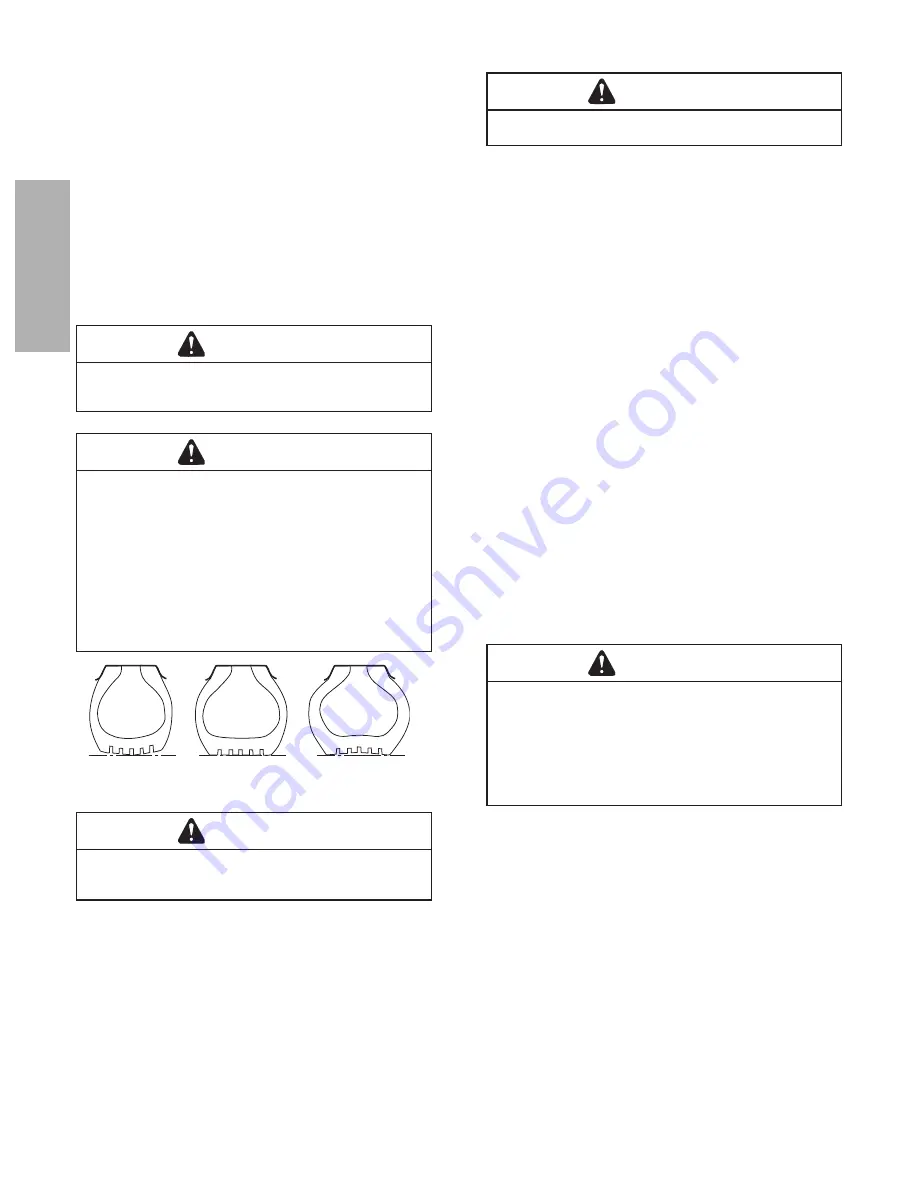
20
MAINTENANCE
Note C. The adjustable torque arm tube retaining nuts
should be tightened to the torque shown above
Tires, Rims and Disc Wheels
Tire Infl
ation
Proper and improper inflation will produce the tire
section and ground contact characteristics shown in
Figure 10
. Tire inflation must be checked daily while
tires are cold.
Either overinflation or underinflation will cause
premature tire wear.
CAUTION
Do not attempt to adjust the inflation pressure
while the tires are hot.
CAUTION
Do not exceed the cold inflation pressures. In
some cases the rim or disc wheel will have a
lower inflation pressure that the tire, in which
case the lower pressure must be used. The
maximum inflation pressure to be used is
shown on the certification label. Tire inflation
must be checked during road stops to locate
air losses. Also, remove any foreign objects
jammed between the dual wheels.
Figure 10. Proper Tire Inflation
WARNING
Repair any leaks immediately. All tires must be
equipped with valve caps.
Tire Overinflation
Overinflation weakens the cord body of the tire by
reducing its ability to absorb road shocks.
Overinflation can cause failure due to fatigue
cracks.
Overinflation can also cause rim and wheel
damage.
1. Inflate to correct pressure when tires are cool.
WARNING
Do not overinflate tires.
2. Never “bleed” tires to relieve excessive pressure
buildup when the tires are warm. Excessive buildup of
air pressure can be due to load, underinflation, speed, or
a combination of the three.
Tire Underinflation
Underinflation causes rapid wear and premature fail
-
ure. Underinflation or overloading of the tires on any
vehicle driven at sustained speeds will result in weaken-
ing of the tire cords. This can make the tire susceptible
to further damage or failure even under normal load and
inflation conditions.
Matching Dual Tires
Matching of the duals by size will result in longer tire
life. Improper matching will cause the larger diameter tire
to carry an overload. This will cause typical overloaded
tire difficulties. The smaller diameter tire will also wear
more rapidly due to scuffing. Differences of not more
than 1/4 inch (6.35 mm) in diameter or 3/4 inch (19.1
mm) in circumference are allowed.
NOTE: The smaller of the two tires should be mount-
ed in the inside position.
Removing Tire and Rim Assemblies
WARNING
Before removing the tire and rim or the tire and
disc wheel assemblies, remove the valve core
and exhaust all air from both tires in the dual
assembly. Check the valve stem by running a
piece of wire through the stem to make sure it is
not plugged.
Removing Tire and Disc Wheel Assemblies
With the trailer supported by jacks and blocks, remove
all the air from the tires (see warning on this page). Re-
move the cap nuts (see
Figures 14
and
15
). Remove the
outside tire and disc wheel. Remove the inside tire and
disc wheel if it must be changed.
OVER
INFLATION
PROPER
INFLATION
UNDER
INFLATION
















































